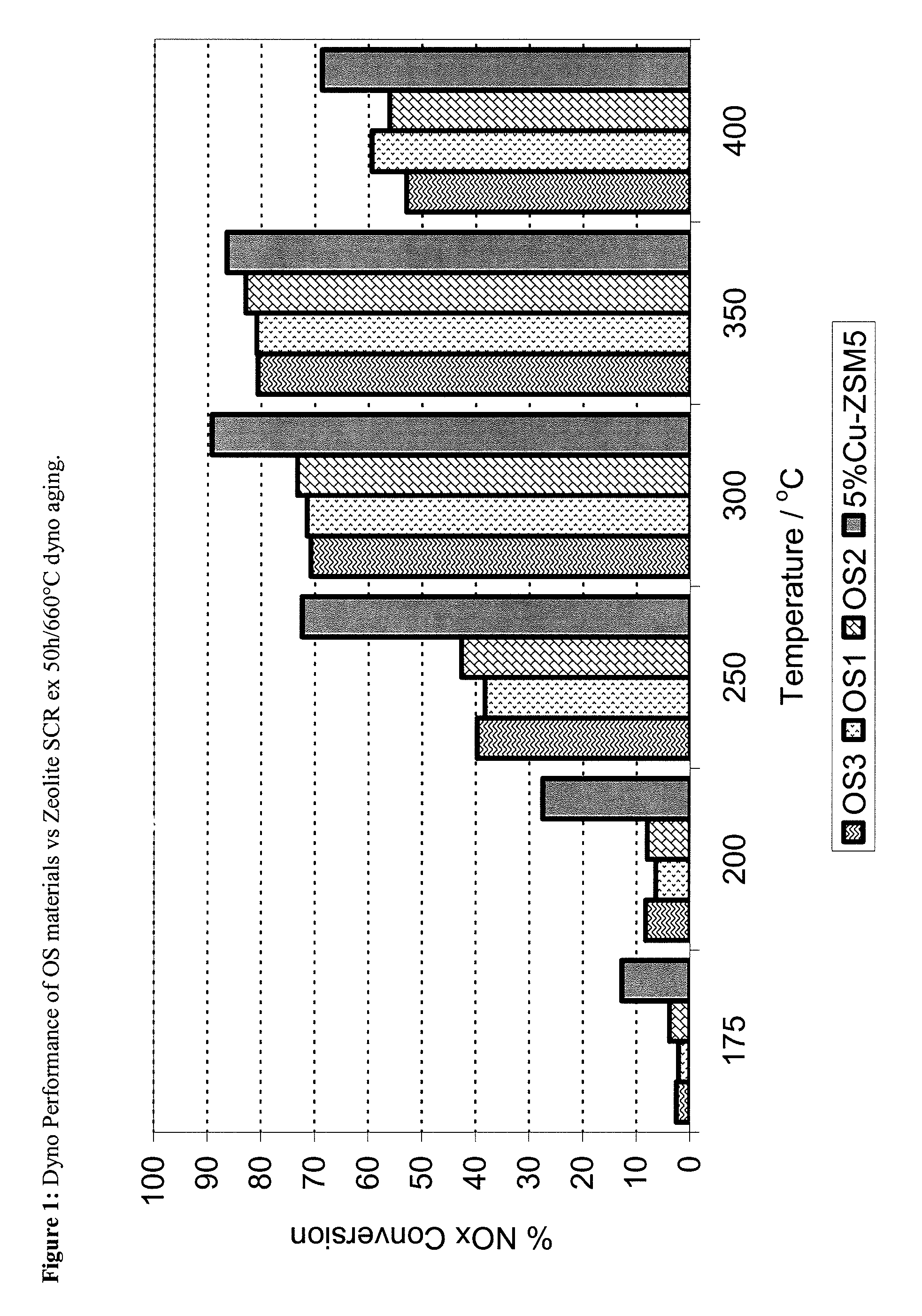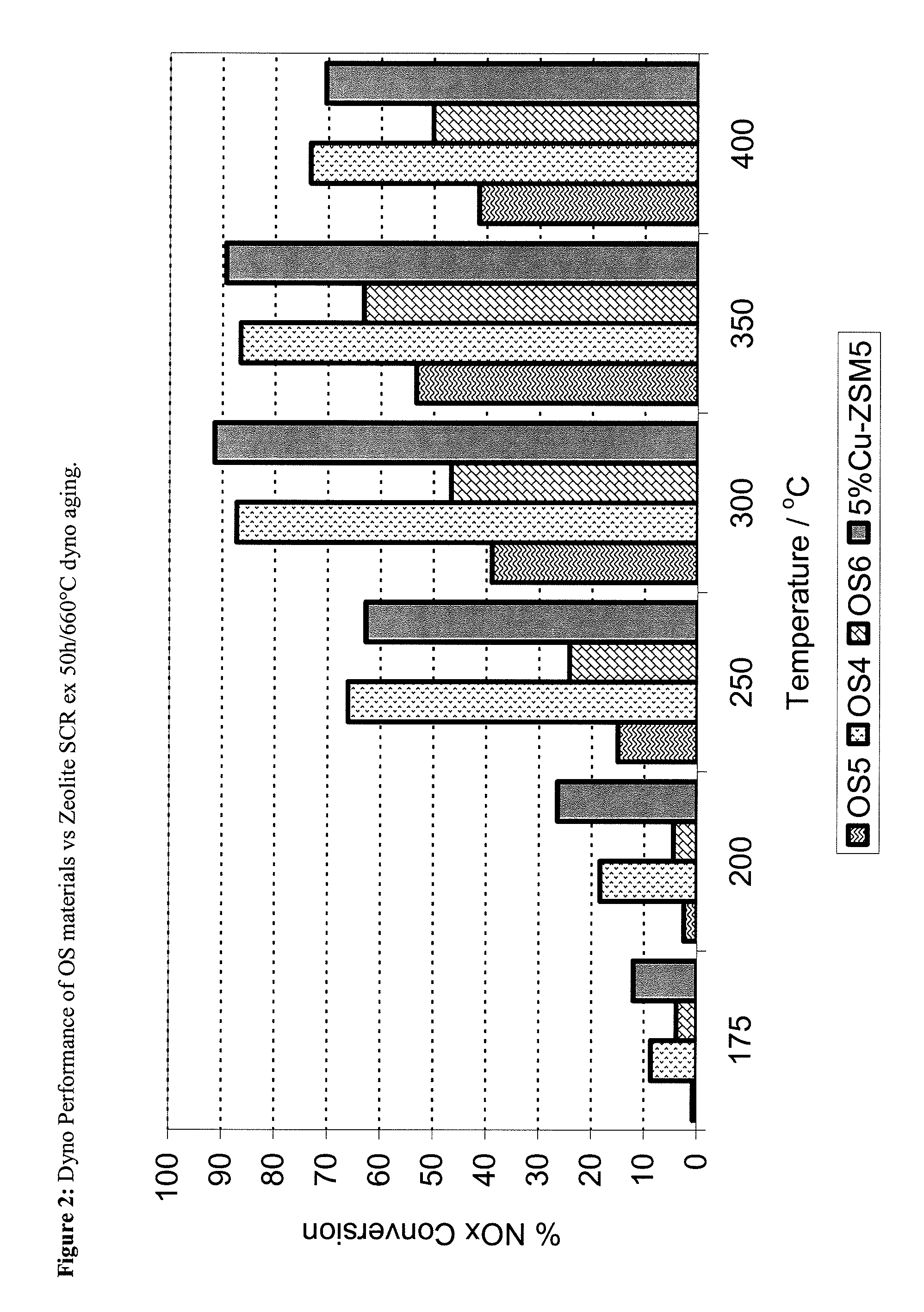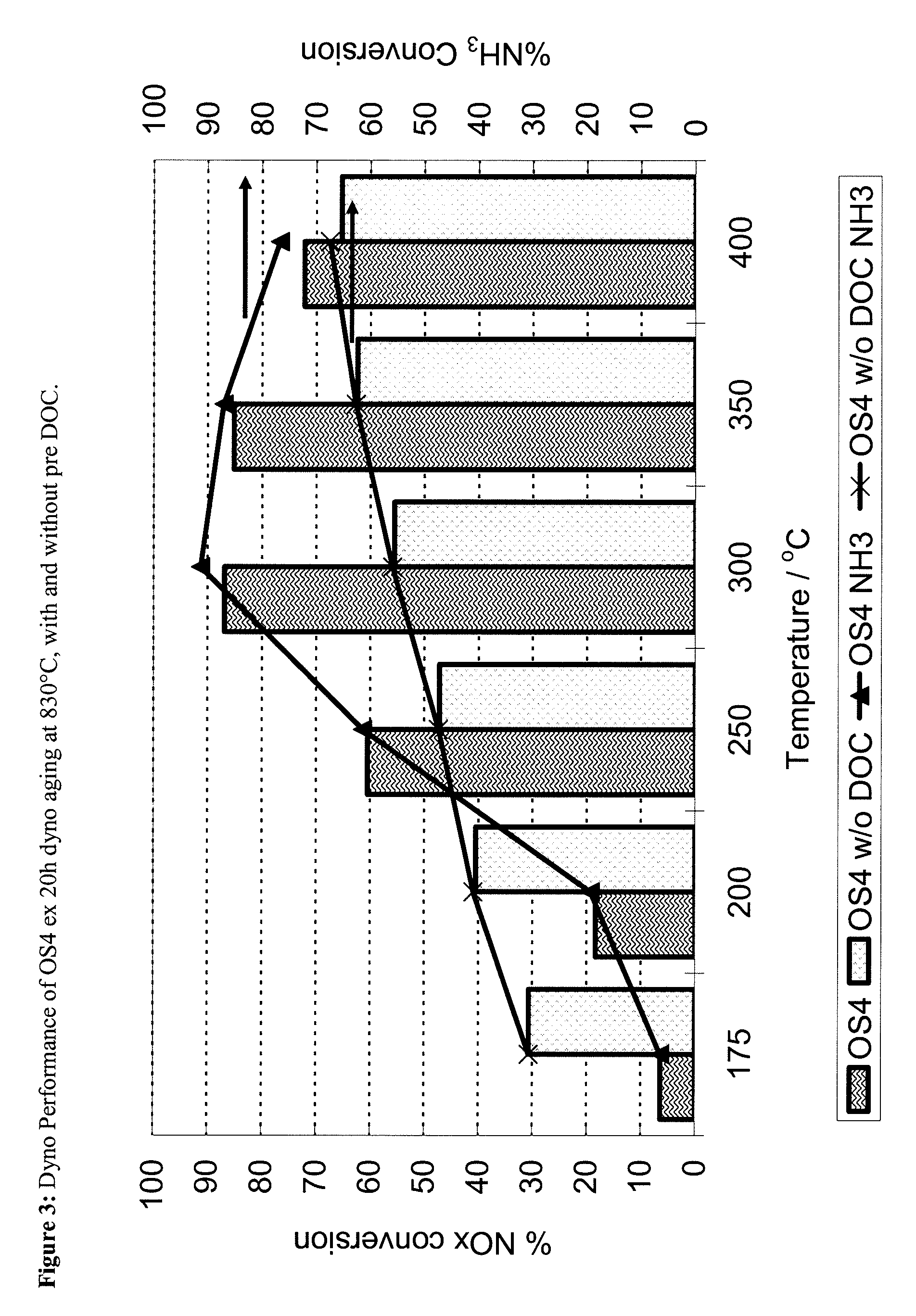ZrOx, Ce-ZrOx, Ce-Zr-REOx as host matrices for redox active cations for low temperature, hydrothermally durable and poison resistant SCR catalysts
a matrice and redox active cation technology, applied in the field of ce-zrox, ce-zrox, ce-zr-reox as host matrices for redox active cations for low temperature, hydrothermally durable and poison resistant scr catalysts, can solve the problems of oxidation of nitrogen, toxicity, and drawbacks of such catalysts, and achieve the effect of facilitating scr catalysis
- Summary
- Abstract
- Description
- Claims
- Application Information
AI Technical Summary
Benefits of technology
Problems solved by technology
Method used
Image
Examples
examples
[0094]The synthesis method of the OS4 material followed the method of Bortun and Nunan (U.S. Pat. No. 6,605,264) relied on and incorporated herein by reference. Herein, the required concentrations of Zr (ZrO(NO3)2 solution), Ce (ex Ce(NO3)3.6H2O) and Y (Y(NO3)3.6H2O) are dissolved in deionised (D.I.) water with constant stirring to form a homogeneous solution. Next a mixture of Nb (ex NbCl5) in aqueous HCl, to which small quantities of H2O2 are added (to maintain Nb5+ in solution) was prepared. This mixture was then added slowly, and with vigorous mixing, to the other aqueous precursors. The final mixture was then added to 3M NH4OH, again with vigorous mixing, to form a precipitated suspension. The suspension was mixed for 3 hours and then filtered and repeatedly washed to remove any residual NH4Cl and NH4NO3, prior to drying at 120° C. for 24 h and calcination at 700° C. for 2 hours.
[0095]The synthesis of OS7 followed U.S. application Ser. No. 12 / 363,310 which is relied on and inco...
PUM
| Property | Measurement | Unit |
|---|---|---|
| Temperature | aaaaa | aaaaa |
| Temperature | aaaaa | aaaaa |
| Temperature | aaaaa | aaaaa |
Abstract
Description
Claims
Application Information
 Login to View More
Login to View More - R&D
- Intellectual Property
- Life Sciences
- Materials
- Tech Scout
- Unparalleled Data Quality
- Higher Quality Content
- 60% Fewer Hallucinations
Browse by: Latest US Patents, China's latest patents, Technical Efficacy Thesaurus, Application Domain, Technology Topic, Popular Technical Reports.
© 2025 PatSnap. All rights reserved.Legal|Privacy policy|Modern Slavery Act Transparency Statement|Sitemap|About US| Contact US: help@patsnap.com



